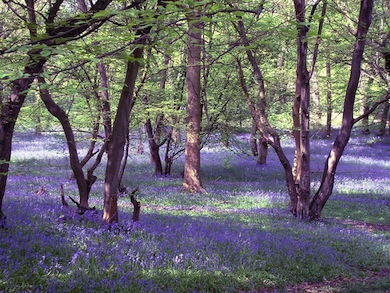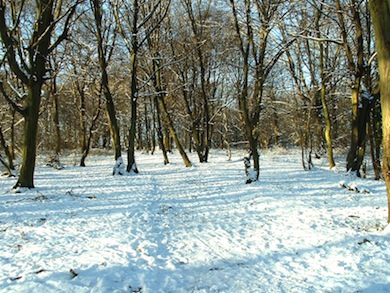Duck wood is predominantly ancient woodland and a series of ponds. The wood is part of a larger nature reserve with Dagnam Park and Hatter’s Wood, which form part of a separate Metropolitan site. An ancient bank-and-ditch runs through the north and west of the site.
Local Wildlife Site
Accessible Sites of Importance for Nature Conservation
Duck Wood
Borough: Havering
Grade: Borough Grade I
Access: Free public access (all/most of site)
Area: 10.27 ha
Description
Wildlife
This wood is dominated by pedunculate oak and old hornbeam coppice, with many ash, field maple and sweet chestnut trees. Wild cherry, small-leaved lime, wild service-tree, horse chestnut and grey poplar are also present but rare. An old hawthorn hedge and bank is located to the north and west of the site. The wood's limited shrub layer includes elder and bramble with some elm. The ground plants include nettle, bracken and tufted hair-grass in less shady places, and spring flowers including bluebell, wood anemone and dog's mercury in more shady areas. The small ponds support common and least duckweeds, water soldier, greater spearwort, pendulous sedge, gypsywort, white water-lily and remote sedge. Fine-leaved water-dropwort, a rare plant in London, has also been recorded. These ponds are very valuable for amphibians. Breeding birds include sparrowhawk, woodpeckers and bullfinch, and hawfinches may occasionally be seen here in the winter. The wood also supports several notable insects.Facilities
No information available
Duck Wood in spring © Alan Cooper

Duck Wood in winter © Alan Cooper
Feedback
Have a question or a comment for this site, or notice anything missing or out of date? Please contact us.
